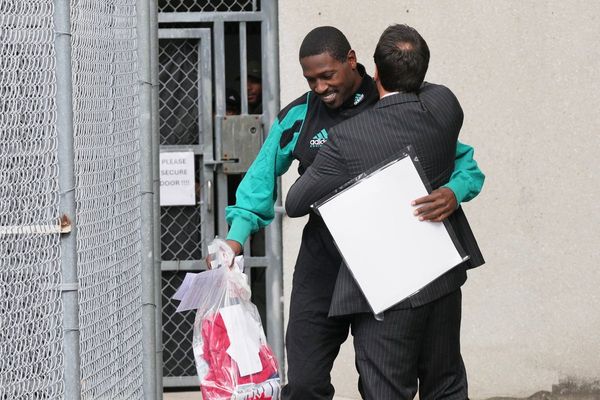
A Hong Kong department store took down a digital artwork that contained hidden references to jailed free-speech defenders, in an incident the artist says is evidence of the erosion of free speech by Chinese authorities.
Patrick Amadon’s No Rioters was put on display on a billboard at the huge Sogo Causeway Bay store as the city was promoting itself as a cultural hub following years of pandemic travel restrictions. Art Basel Hong Kong, a prominent art fair in Asia, began this week, alongside other art events.
It was unclear whether the government played a role in the decision to remove the artwork. A few days earlier a slasher film featuring Winnie-the-Pooh, a figure often used in playful taunts of China’s President Xi Jinping, was pulled from cinemas.
Hong Kong is a former British colony that returned to China’s rule in 1997, with Beijing promising to continue its western-style freedoms. Pro-democracy protests in 2019 ended with China imposing a “national security law” that criminalised much dissent. The city’s government has since put on trial, jailed and silenced many activists in a process that continues.
Amadon said he had followed the protests in Hong Kong closely, and he wanted his work to show solidarity with the protesters and remind people about the new reality of the city.
“It was too much watching Art Week in Hong Kong pretend the Chinese government didn’t crush a democracy and turn Hong Kong into a vassal surveillance state … because it’s a convenient location for a good market,” the Los Angeles-based artist said.
Amadon said he knew the work would be controversial and was surprised it had been displayed in public for days. It featured a panning surveillance camera.
Flashes of Matrix-like text showcased the names and prison sentences of convicted activists and other prominent figures in the pro-democracy movement, including the legal scholar Benny Tai and the former student leader Joshua Wong, who were both charged with subversion.
These details were shown too fast to be seen by the naked eye, Amadon said, but viewers could see the details if they used a camera to capture stills. It referred to journalist turned activist Gwyneth Ho who was assaulted when she was live-streaming a mob attack in July 2019 during the massive protests sparked by an extradition bill.
The gallery that arranged the exhibit did not know whether the government ordered it, Francesca Boffetti, CEO at Art Innovation Gallery, wrote in an email.
“Our intermediary told us that the owners of Sogo were concerned about the sensitive political content hidden behind Patrick’s work, so they decided to remove the work from the exhibition immediately,” Boffetti said.
No one mentioned any law or threatened them with fines, she added, but Sogo’s legal team asked the gallery whether it was aware of the content and message.
Police and Sogo did not immediately respond to a request for comment. The Culture, Sports and Tourism Bureau told the Associated Press that it did not contact Sogo.
Amadon said the gallery told him in an urgent call that it was very concerned about its legal exposure after a conversation with Sogo.
Under the national security law, the city’s art and media communities have learned to be wary of crossing vaguely defined red lines. The pro-democracy newspaper Apple Daily was forced to close after authorities arrested its top editors and executives and accused them of foreign collusion.
Some artists known for their political work left Hong Kong under the shadow of the law. Some film-makers have stopped showing their work in the city. Even those producing non-political content have become cautious.
The government insists residents continue to enjoy promised freedoms. Amadon said what happened to his work showed that the city had lost its freedom of expression and artistic freedom.
“This objectively shows that they are no longer here in the same way that they once were,” he said. “From a narrative standpoint, I mean, it did have to get censored and taken down, I feel like, to be a completed piece.”
With Associated Press







